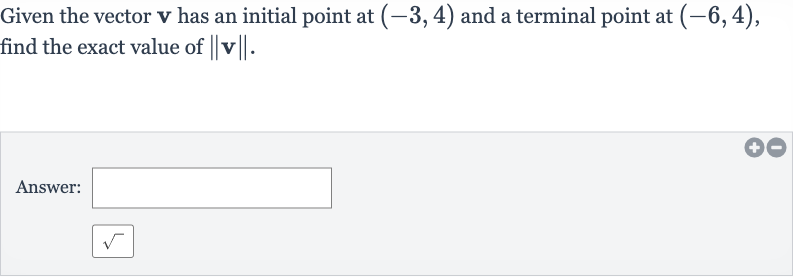AI tutor
Welcome to Bytelearn!
Let’s check out your problem:

Given the vector has an initial point at and a terminal point at , find the exact value of .Answer:
Full solution
Q. Given the vector has an initial point at and a terminal point at , find the exact value of .Answer:
- Calculate Magnitude of Vector: The magnitude of a vector , denoted as , is calculated using the distance formula between its initial and terminal points. The formula is , where is the initial point and is the terminal point.
- Substitute Given Points: Substitute the given points into the distance formula. The initial point is and the terminal point is . So, , , , and .
- Calculate Differences: Calculate the differences: , and .
- Square the Differences: Square the differences: and .
- Add Squared Differences: Add the squared differences: .
- Find Magnitude of Vector: Take the square root of the sum to find the magnitude of vector : .
More problems from Transformations of absolute value functions: translations and reflections
QuestionGet tutor help
QuestionGet tutor help
QuestionGet tutor help
QuestionGet tutor help
QuestionGet tutor help
QuestionGet tutor help
QuestionGet tutor help
QuestionGet tutor help
QuestionGet tutor help
